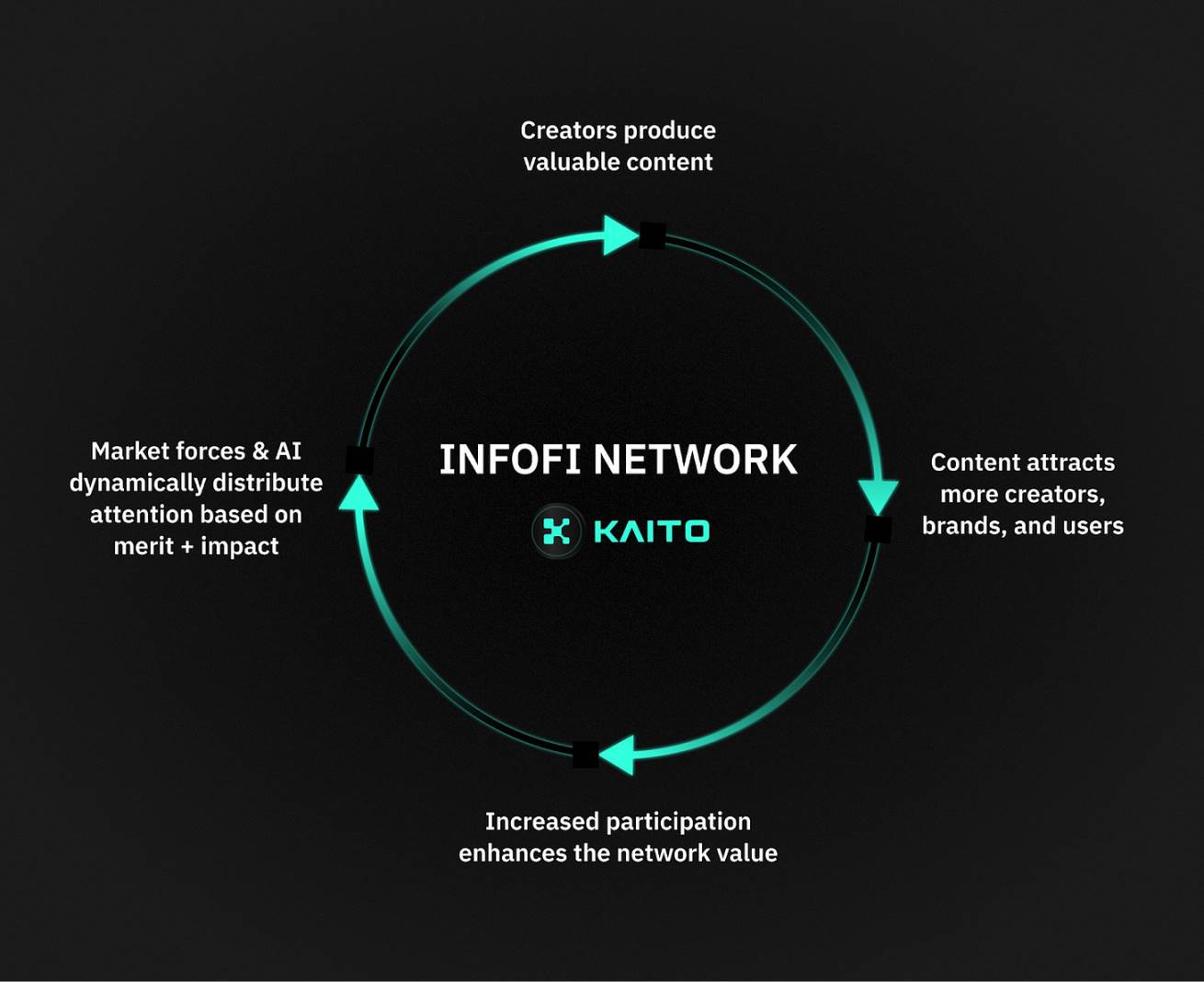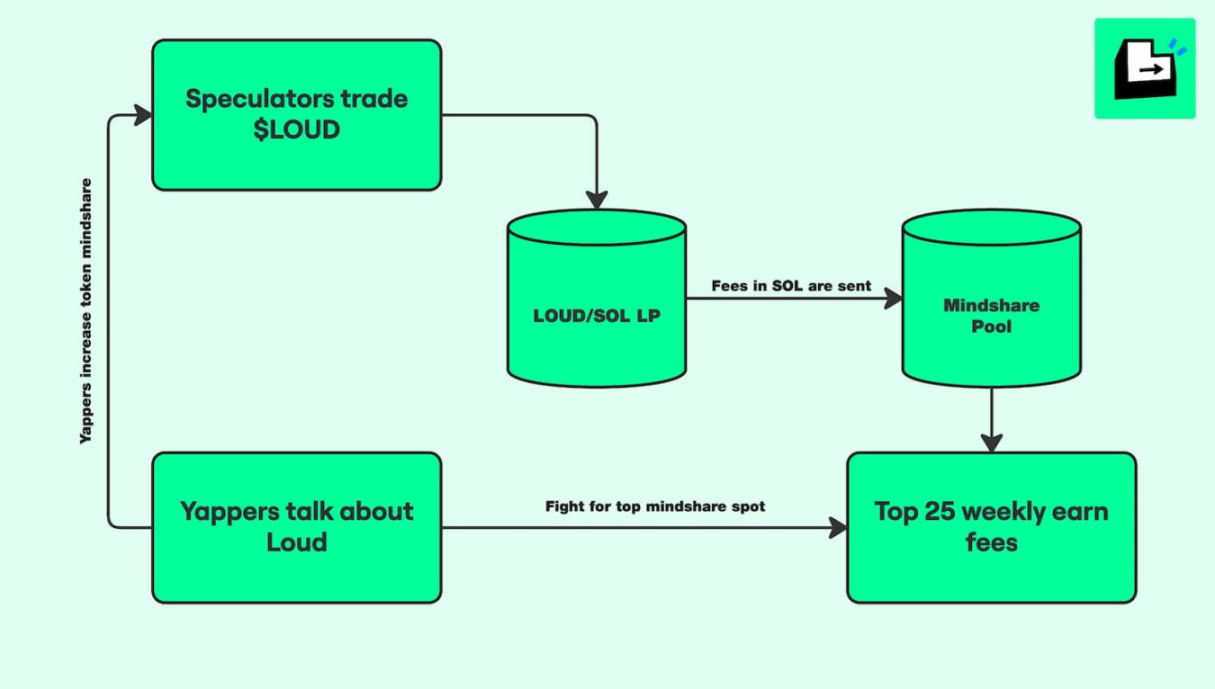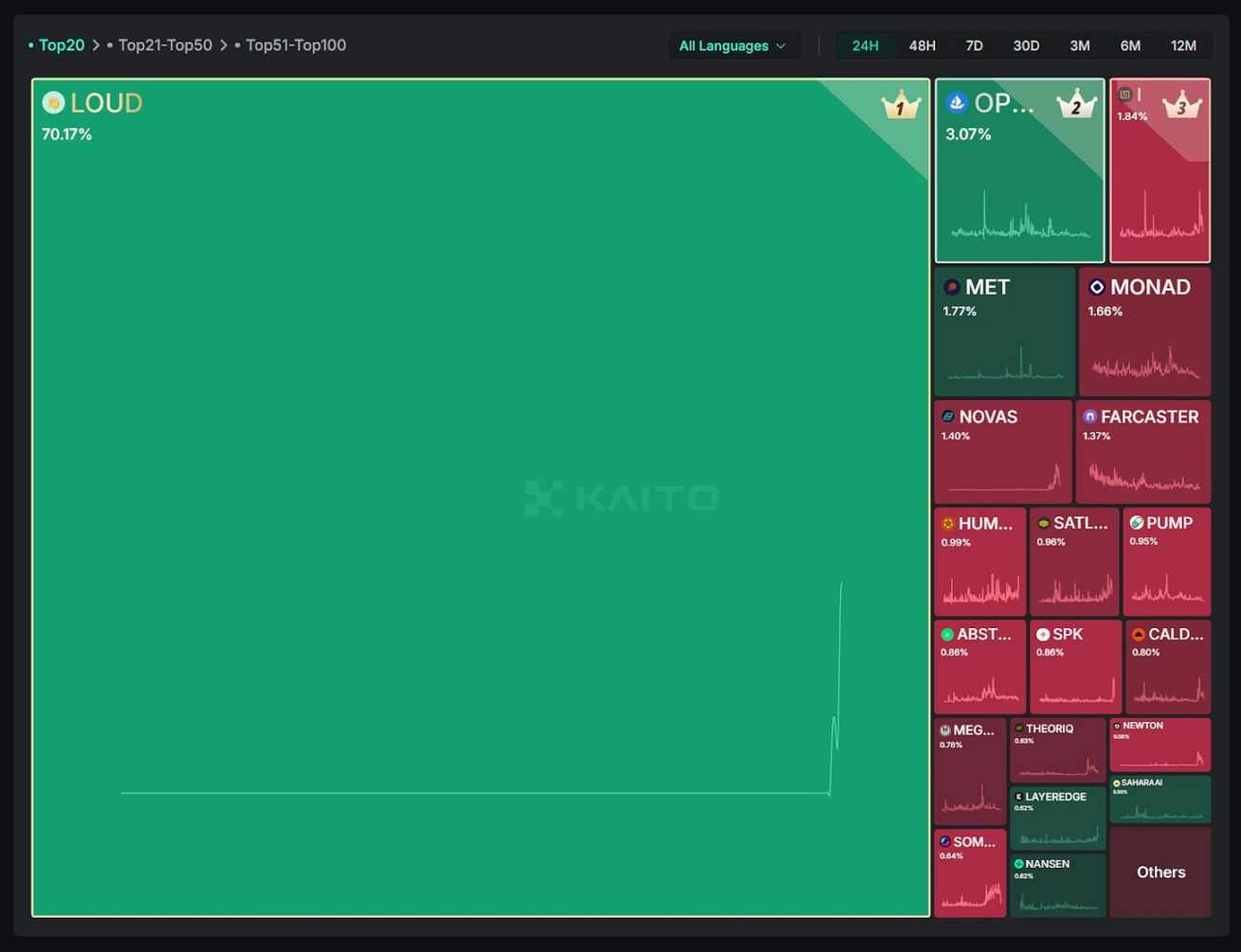InfoFi is an important experiment designed to create and operate a new economic structure.
Written by: Jay Jo, Tiger Research
Translated by: AididiaoJP, Foresight News
TL;DR
InfoFi is a structured attempt to quantify user attention and activity and link it to rewards.
InfoFi currently faces some structural issues, including declining content quality and reward centralization.
These are not limitations of the InfoFi model itself, but design issues related to evaluation criteria and reward distribution methods that urgently need improvement.
The Era of Attention as Currency
Attention has become one of the scarcest resources in modern industries. In the age of the internet, information is overwhelming, while human capacity to process information is extremely limited. This scarcity has led many businesses to engage in fierce competition, with the ability to capture user attention becoming a core competitive advantage.
The crypto industry exhibits this competition for attention in a more extreme form. Attention share plays a crucial role in token pricing and liquidity formation, becoming a key factor in determining project success or failure. Even technically advanced projects can often be eliminated from the market if they fail to attract market attention.
This phenomenon stems from the structural characteristics of the crypto market. Users are not only participants but also investors, and their attention directly leads to actual token purchases, creating greater demand and network effects. Liquidity is created where attention is concentrated, and narratives develop on this liquidity foundation. These established narratives then attract new attention, forming a virtuous cycle that drives market development.
InfoFi: A Systematic Attempt to Tokenize Attention
The market operates based on attention. This structure raises a key question: who can truly benefit from this attention? Users generate attention through community activities and content creation, but these actions are difficult to measure and lack a clear direct reward mechanism. So far, ordinary users can only gain indirect benefits by buying and selling tokens. There is currently no reward mechanism for contributors who genuinely create attention.

The InfoFi network by Kaito, source: Kaito
InfoFi is an attempt to address this issue. InfoFi combines information with finance, creating a mechanism that evaluates user contributions based on the attention generated by user content (such as views, comments, and shares) and links it to token rewards. Kaito's success has allowed this structure to spread widely.
Kaito evaluates social media activity through AI algorithms, including posting and commenting. The platform provides token rewards based on scores. The more attention user-generated content attracts, the greater exposure the project gains. Capital views this attention as a signal and makes investment decisions based on it. As attention grows, more capital flows into the project, and participant rewards increase accordingly. Participants, projects, and capital work together through attention data as a medium, forming a virtuous cycle.
The InfoFi model makes significant contributions in three key areas.
First, it quantifies user contribution activities where evaluation criteria are unclear. The points system allows for a structured definition of contributions and helps users predict what rewards they can earn through specific actions, thereby enhancing the sustainability and consistency of user engagement.
Second, InfoFi transforms attention from an abstract concept into quantifiable and tradable data, shifting user participation from simple consumption to productive activity. Most existing online participation involves investment or content sharing, while the platform profits from the attention generated by these activities. InfoFi quantifies users' market reactions to this content and distributes rewards based on this data, leading to participants' actions being viewed as productive work. This shift empowers users to become value creators in the network, rather than just community members.
Third, InfoFi lowers the barriers to information production. In the past, major Twitter influencers and institutional accounts dominated information distribution, capturing most of the attention and rewards. Now, ordinary users can also receive tangible rewards after gaining a certain level of market attention, creating more opportunities for participation across different backgrounds.
The Attention Economy Trap Triggered by InfoFi
The InfoFi model is a new reward design experiment within the crypto industry that quantifies user contributions and links them to rewards. However, attention has become an overly centralized value, and its side effects are gradually becoming apparent.
The first issue is excessive competition for attention and declining content quality. When attention becomes the standard for rewards, the purpose of content creation shifts from providing information or encouraging meaningful participation to merely seeking rewards. Generative AI has made content creation easier, leading to the rapid spread of bulk content lacking genuine information or insights. This so-called "AI Slop" content is spreading throughout the ecosystem, raising concerns.

Loud Mechanism, source: Loud
The Loud project clearly illustrates this trend. Loud attempts to tokenize attention, and the platform chooses to distribute rewards to the top users who gain the most attention within a specific time frame. This structure is experimentally interesting, but attention has become the sole standard for rewards, leading to excessive competition among users and a proliferation of repetitive low-quality content, ultimately resulting in content homogenization across the community.

Data source: Kaito Mindshare
The second issue is reward centralization. Attention-based rewards begin to focus on specific projects or themes, causing content from other projects to passively disappear or diminish in the market. Kaito's shared data clearly indicates this. Loud once dominated over 70% of crypto content on Twitter, leading the information flow within the ecosystem. When rewards focus on attention, content diversity declines, and information gradually revolves around projects offering high token rewards. Ultimately, the scale of marketing budgets determines influence within the ecosystem.
Structural Limitations of InfoFi: Evaluation and Distribution
4.1. Limitations of Simple Content Evaluation Methods
The attention-centered reward structure raises a fundamental question: how should content be evaluated, and how should rewards be distributed? Currently, most InfoFi platforms rely on simple metrics (such as views, likes, and comments) to assess content value. This structure assumes that "high engagement equals good content."
While high-engagement content may indeed have better information quality or delivery effectiveness, this structure primarily applies to very high-quality content. For most mid- to low-tier content, the relationship between feedback quantity and quality remains unclear, leading to the phenomenon where repetitive formats and overly positive content receive high scores. Meanwhile, content that presents diverse perspectives or explores new topics struggles to gain the recognition it deserves.
Addressing these issues requires a more comprehensive content quality evaluation system. Simple engagement-based evaluation criteria are fixed, while content value can change over time or in different contexts. For example, AI can identify meaningful content, and community-based algorithm adjustment methods can be introduced. The latter can involve allowing algorithms to adjust evaluation criteria based on regularly provided user feedback data, helping the evaluation system flexibly respond to changes.
4.2. Concentration of Reward Structure and Balancing Needs
The limitations of content evaluation coexist with issues in the reward structure, which exacerbates information flow bias. The current InfoFi ecosystem typically operates separate leaderboards for each project, using their own tokens for rewards. In this structure, projects with large marketing budgets can attract more content, and user attention often concentrates on specific projects.
To address these issues, adjustments to the reward distribution structure are needed. Each project can retain its own rewards, while the platform can monitor content concentration in real-time and make adjustments using platform tokens. For example, if content becomes overly concentrated on specific projects, platform token rewards can be temporarily reduced, while themes with relatively low coverage can receive additional platform tokens. Content covering multiple projects can also receive extra rewards. This will create an environment with diverse themes and viewpoints.
Evaluation and rewards form the core of the InfoFi structure. How content is evaluated determines the information flow within the ecosystem, and who receives what kind of rewards is also crucial. The current structure combines a single standard evaluation system with a marketing-centered reward structure, accelerating the dominance of attention while weakening information diversity. The flexibility of evaluation criteria is essential for sustainable operation, and balancing adjustments in the distribution structure are key challenges facing the InfoFi ecosystem.
Conclusion
The structured experiment of InfoFi aims to quantify attention and transform it into economic value, shifting the existing one-way content consumption structure to a producer-centered participatory economy, which is of great significance. However, the current InfoFi ecosystem faces structural side effects in the process of tokenizing attention, including declining content quality and information flow bias. These side effects are less about the limitations of the model and more about the dilemmas encountered during the initial design phase.
The evaluation model based on simple feedback exposes its limitations, and the reward structure influenced by marketing resources also reveals problems. There is an urgent need for improvements to create a system that can accurately assess content quality, as well as community-based algorithm adjustment mechanisms and platform-level balancing mechanisms. InfoFi aims to create an ecosystem where members can earn fair rewards through participation in information production and dissemination. Achieving this goal requires technological improvements and encouraging community participation in design.
In the crypto ecosystem, attention operates like tokens. InfoFi is an important experiment designed to create and operate a new economic structure. Its potential can only be fully realized when it evolves into a structure where valuable information and insights can be shared. The results of this experiment will accelerate the development of a quantified economy of information in the digital age.
免责声明:本文章仅代表作者个人观点,不代表本平台的立场和观点。本文章仅供信息分享,不构成对任何人的任何投资建议。用户与作者之间的任何争议,与本平台无关。如网页中刊载的文章或图片涉及侵权,请提供相关的权利证明和身份证明发送邮件到support@aicoin.com,本平台相关工作人员将会进行核查。




